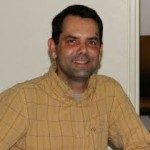Link to Pubmed [PMID] – 22539299
Eur. J. Immunol. 2012 May;42(5):1272-81
The transcriptional regulator promyelocytic leukemia zinc finger (PLZF) is highly expressed during the differentiation of natural killer T (NKT) cells and is essential for the acquisition of their effector/memory innate-like phenotype. Staining with anti-PLZF and anti-NK1.1 Abs allows the definition of two subsets of NKTαβ and NKTγδ thymocytes that differ phenotypically and functionally: a PLZF(+) NK1.1(-) subset composed of mostly quiescent cells that secrete more IL-4 than IFN-γ upon activation and a PLZF(+/-) NK1.1(+) subset that expresses CD127, NK1.1, and other NK-cell markers, secrete more IFN-γ than IL-4 upon activation and contains a sizable fraction of dividing cells. The size of the NK1.1(+) population is very tightly regulated and NK1.1(+) αβ and γδ thymocytes compete for a thymic niche. Furthermore, the relative representation of the PLZF(+) and NK1.1(+) subsets varies in a strain-specific manner with C57BL/6 (B6) mice containing more NK1.1(+) cells and (B6 × DBA/2)F1 (B6D2F1) mice more PLZF(+) cells. Consequently, activation of NKT cells in vivo is expected to result in higher levels of IL-4 secreted in B6D2F1 mice than in B6 mice. Consistent with this possibility, B6D2F1 mice, when compared with B6 mice, contain more “innate” CD8(+) thymocytes, the generation of which depends on IL-4 secreted by NKT cells.

